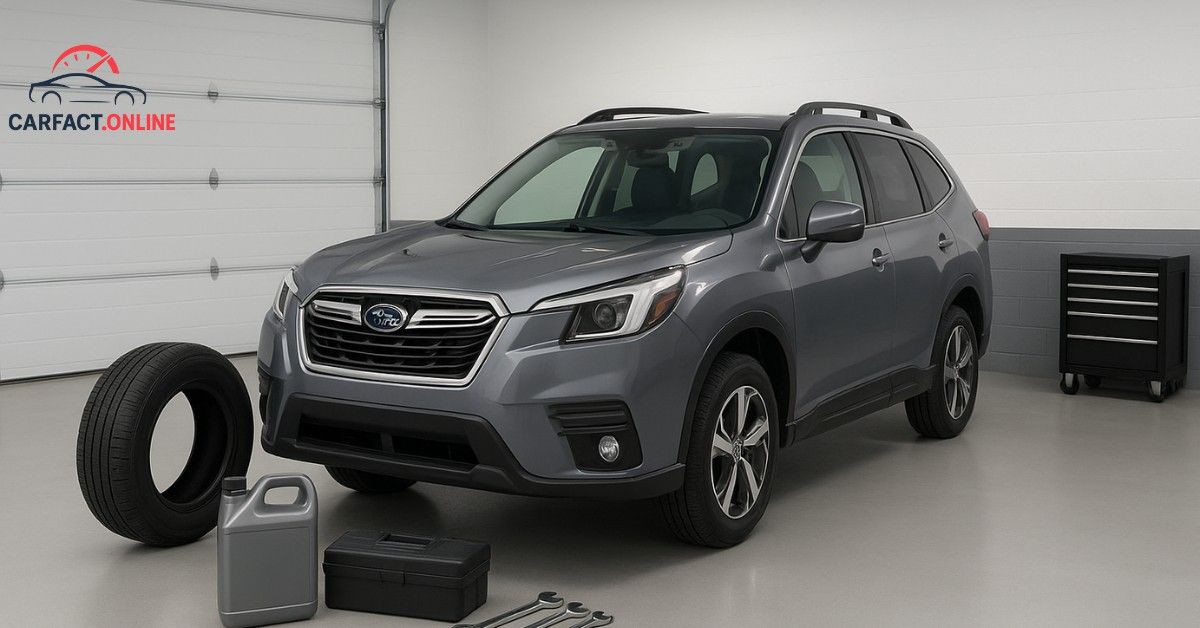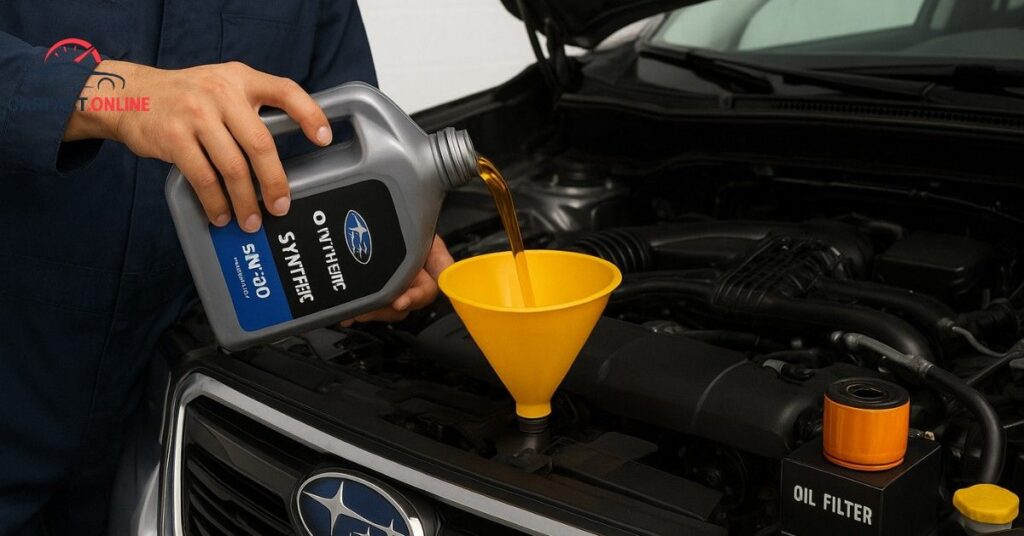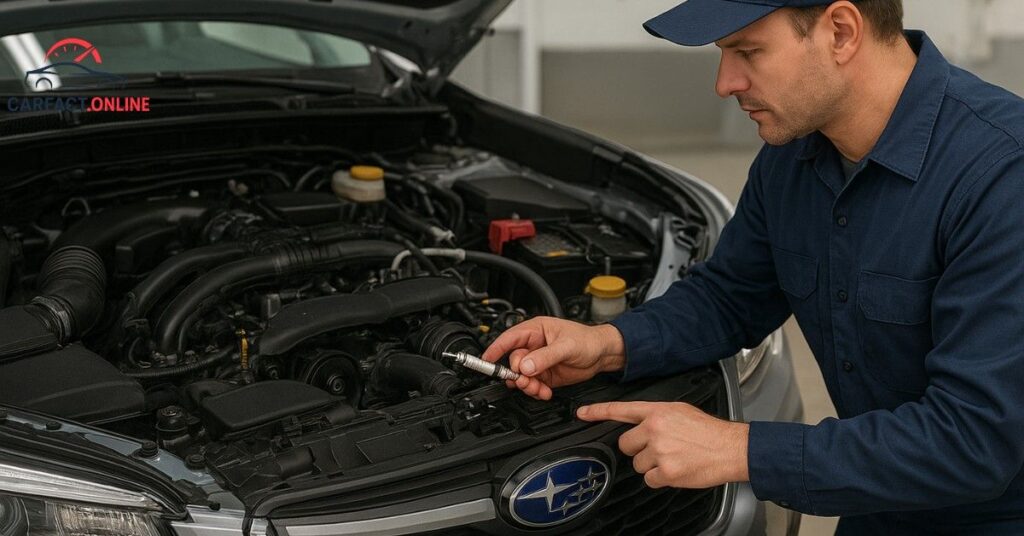2025 Subaru Forester Maintenance Schedule – Complete Guide

Ever found yourself second-guessing when your Subaru Forester needs its next oil change, tire rotation, or inspection? You’re not alone. Many owners love how reliable their Forester is, but keeping up with the 2025 Subaru Forester maintenance schedule can feel confusing and easy to forget. That little voice asking, “Am I overdue?” is enough to make anyone stressed.
This guide is here to clear up the guesswork. We’ll walk through the official Subaru Forester maintenance schedule, explain what needs to be done and when, and share tips to keep your SUV running like new. By the end, you’ll feel confident knowing exactly how to stay on top of maintenance—without the worry or confusion.
When Should I Service My Subaru Forester?
Subaru suggests that you take your Forester at least once in every 6,000 miles, or once in a year, whichever is first. During these visits you typically do the essentials which are change the oil and filter, rotate the tires and have the brakes, the suspension and the steering checked.
The to-do list is getting longer as the miles continue to accumulate. Spark plugs, fluids, filters and belts will also play out at larger markers such as 30,000, 60,000 and 100,000 miles. Consider it your SUV health plan- keep the cogwhes in good shape and you will avoid having bigger headaches in the future.
Understanding the 2025 Subaru Forester’s Maintenance Schedule
Subaru breaks maintenance into two groups: normal and severe driving. Normal is your average commute or highway use. Severe covers things like short city trips, towing, dirt roads, or extreme weather.
Knowing which category you fall into is important. A highway commuter can stick with standard intervals, but if you live with heavy snow, dusty trails, or constant stop-and-go, it’s smart to shorten the gaps. That little adjustment can add years to your Forester’s life.
Subaru Forester Service Schedule
Here’s a snapshot of what Subaru recommends at major milestones:
| Mileage (miles) | Key Services |
| 6,000 | Oil & filter change, tire rotation, overall inspection |
| 12,000 | Cabin filter replacement, brake check, battery inspection |
| 30,000 | Brake fluid, air cleaner element, drive belt inspection |
| 60,000 | Spark plugs, brake fluid, cooling system check, wheel bearing inspection |
| 90,000 | Air cleaner, brake fluid, drive belts, fuel system inspection |
| 100,000 | Transmission & differential fluids, spark plugs, full brake service |
| 120,000 | Spark plugs, brake fluid, air cleaner, cooling system, fuel injectors |
This Subaru Forester service checklist is designed to stop small issues before they snowball into expensive repairs. Preventive care nearly always costs less than a breakdown.
Key Service Intervals for the 2025 Subaru Forester
- Every 6,000 miles: Oil and filter, tire rotation.
- Every 12,000 miles: Brake check, cabin filter, battery inspection.
- Every 30,000 miles: Brake fluid, air cleaner, belts, cooling system.
- Every 60,000 miles: Spark plugs, fluid flushes, deeper inspections.
- Every 100,000–120,000 miles: Transmission and differential service, plus injectors and PCV valve.
Think of these as your Forester’s doctor visits: small, routine checkups more often, with full exams at major age markers.
Quick-Reference Table
| Interval (Miles) | Service Level | Examples of Work Done |
| 6k – 12k | Routine Care | Oil, filter, tire rotation, cabin air filter, brakes |
| 30k – 60k | Mid-Level | Air cleaner, brake fluid, spark plugs, drive belts |
| 90k – 120k | Major Service | Transmission fluid, differential fluid, injectors |
This table gives you a quick way to check when your Forester is due for service without flipping through the manual.
Oil Changes and Fluid Maintenance

The Lifeblood of your engine is oil. Subaru prescribes synthetic oil replacement after every 6000 miles and it should be done with a new filter. The brake fluid is supposed to be replaced after every 30,000-60,000 miles and fluids such as transmission and differential will typically be involved after 100,000 miles.
Keeping fluids cool is the same as keeping yourself cool – neglected and everything begins to fall apart quickly.
Tire Care and Rotation
Turning your tires after every 6,000 miles will make them wear out evenly and increase their lifespan. It is also better in handling and makes your Forester safer on the road.

When you detect either uneven tread, vibration or pulling to one side, then it is your cue to a rotation or an alignment.
Brake System Maintenance
Riders do not play brakes. Subaru recommends 12,000-mile and 30,000-60,000 mile intervals of brake fluid changes and inspections respectively.
When you hear squeaks, get a soft pedal or experience longer stopping distances then it is time to have them checked. It is better to be ahead of the brakes to save money and tranquility.
Engine and Drivetrain Maintenance
Air filters should be replaced every 12,000–15,000 miles, while spark plugs usually last about 60,000 miles.
If your Forester is equipped with a CVT, routine fluid inspections are especially important. They keep shifting smooth and extend the life of the transmission.
Subaru’s EyeSight System Maintenance
Subaru has a driver-assist package called EyeSight, which takes care of adaptive cruise control, pre-collision braking, etc. It operates with the help of cameras and sensors, therefore, they should be verified on regular basis, particularly after a windshield replacement or repair.
It can be easily disoriented by even a dirty windshield, and one of the easiest resources to maintain the reliability of EyeSight is to keep the glass clean.
Battery and Electrical System Care
The batteries are prone to failure when in hot or cold environment. Subaru suggests 12,000-24,000 miles of inspection. The alternator, starter and wiring are also intelligent to check. The best way to avoid being caught up is to spot electrical problems at an early stage.
Tires, Brakes, and Fluids—Operational Notes
These three are your Forester’s everyday essentials. Tires give you traction, brakes keep you safe, and fluids make sure everything stays cool and lubricated.
Whenever possible, handle them together in the same visit. It’s efficient and ensures the most important systems are never overlooked.
Severe-Condition Adjustment (When to Tighten the Cadence)
If you drive in harsh climates, tow frequently, or make mostly short city trips, Subaru considers that “severe use.” In that case, shorten your service intervals.
For example, instead of waiting 6,000 miles for an oil change, you might change it at 3,000–4,000 miles. That extra attention keeps your SUV from wearing out early.
Long-Horizon Items to Plan For
Some services don’t show up until well into your Forester’s life — like replacing injectors, PCV valves, or transmission fluids after 100,000 miles.

Think of these as long-term investments. Handle them on time, and you’ll avoid major repair bills later.
Importance of Regular Maintenance for Your Subaru
Routine care is about more than just preventing breakdowns — it’s about protecting your investment. A properly followed Subaru Forester maintenance plan boosts resale value and keeps your warranty coverage solid.
Skip services, and you risk voiding warranty protections or paying for big repairs out of pocket. It’s almost always cheaper to maintain than to fix.
DIY Maintenance Tips for Subaru Owners
Some jobs are easy enough to handle at home: changing wiper blades, checking tire pressure, or swapping out an air filter. They take just minutes and save you money.
For bigger jobs — CVT fluid, brake servicing, or EyeSight calibration — leave it to Subaru-certified technicians.
Cost Control & Service Strategy
Maintenance costs can stack up, but smart planning helps. Bundle tire, brake, and fluid services into a single visit to save on labor. Also, keep an eye out for service specials or prepaid maintenance packages from Subaru dealers. A little planning now means big savings later.
👉 You can compare estimated costs at RepairPal Subaru Forester Maintenance Costs to plan your budget better.
Conclusion
The 2025 Subaru Forester Maintenance Schedule is more than just a checklist — it’s your guide to keeping this SUV safe, dependable, and ready for every trip. From routine oil changes to major 100,000-mile services, sticking to the plan keeps costs down and performance up.
Stay on schedule, and you’re not just maintaining a vehicle — you’re making sure your Forester will be with you for all the adventures ahead.
Discover expert car tips, towing guides, and vehicle insights at CarFact.online.
FAQs
When should I service my Subaru Forester?
Every 6,000 miles or once per year.
How often should I change oil in a Subaru Forester?
Every 6,000 miles using synthetic oil.
What’s included in the Subaru Forester 60,000-mile service?
Spark plugs, brake fluid, cooling system, and air filters.
Do severe conditions change the maintenance plan?
Yes — harsh climates, towing, or short trips mean shorter intervals.
Does maintenance affect resale value?
Absolutely. A Forester with service records commands a higher price.
Have questions about the 2025 Subaru Forester Maintenance Schedule? Contact us—we’re here to help you find the right answers.
